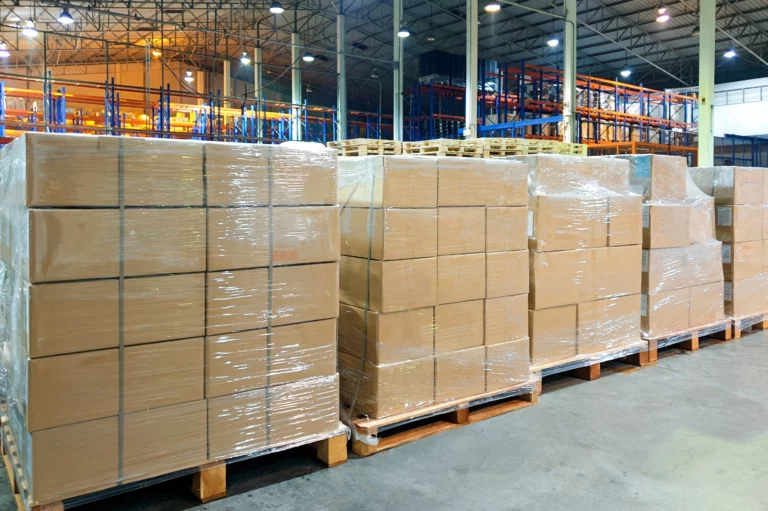Refrigerated Transportation: Keeping Your Goods Fresh and Safe

In today’s fast-paced world, the demand for perishable goods is higher than ever. From fresh produce and dairy to frozen foods, maintaining the right temperature during transportation is crucial to ensure product quality. This is where refrigerated trucking, or reefer shipping, comes into play. Let’s explore how these logistics solutions help businesses meet the growing need for temperature-sensitive shipping.
What is Refrigerated Trucking?
Refrigerated trucking, also known as reefer shipping, involves the use of temperature-controlled trucks to transport goods that require precise temperature conditions. Whether it’s fresh produce, frozen meals, or pharmaceuticals, these shipments must be meticulously managed to ensure their integrity throughout the supply chain.
What Is Refrigerated Transportation?
Refrigerated trucking, or reefer shipping, is a method of transporting goods that require specific temperature control during transit. The vehicles used in refrigerated trucking are equipped with built-in refrigeration systems, ensuring that products are maintained at the desired temperature throughout the entire journey.
Refrigerated transportation has evolved significantly since its early days in the 1800s, when ice and salt were used in train cars to keep temperature-sensitive goods cool. Today, advanced technology and specialized equipment ensure the safe and efficient transport of perishable goods, reducing the risk of spoilage and damage.
Types of Refrigerated Services
- Full Truckload (FTL): Perfect for larger shipments that fill an entire truck. FTL offers direct delivery with minimal handling, reducing the risk of damage.
- Less Than Truckload (LTL): A cost-effective option where multiple shippers share space in one refrigerated truck. This flexibility allows businesses to ship smaller quantities without paying for unused space.
Products That Use Refrigerated Transportation
- Frozen Goods
Frozen freight shipping is a subset of refrigerated transportation focused on maintaining a consistent, freezing temperature for products such as ice cream, frozen meals, and other frozen items. These goods must be kept frozen to prevent thawing and spoilage, as even a slight temperature deviation can compromise their quality.
- Pharmaceutical Products
The transportation of pharmaceuticals requires precise temperature control to maintain their efficacy and safety. Medications, vaccines, and biopharmaceuticals must be kept at specific temperatures throughout transit to meet strict regulatory standards and avoid product loss.
- Perishable Foods
Refrigerated transportation ensures that perishable foods like meat, seafood, fresh fruits and vegetables, and dairy products are safely delivered without deterioration. This is especially crucial for products transported across long distances or from regions where they are locally sourced to areas with limited access.
- Personal Care Products:
Certain personal care products, such as skincare or cosmetic items sensitive to temperature changes, also benefit from refrigerated transport. These products require stable conditions to maintain their effectiveness and quality during shipment.
The Benefits of Refrigerated Transportation
Refrigerated transportation is essential for handling perishable goods that require temperature-controlled environments. It helps maintain the quality, safety, and value of these products throughout the supply chain.
Ensuring Freshness and Safety
Refrigerated transportation keeps products like fruits, dairy, meat, and seafood fresh by protecting them from spoilage. This ensures they arrive at their destination in excellent condition, minimizing revenue loss.
Meeting High Demand
With the growing demand for fresh and frozen goods, refrigerated transportation plays a vital role in fulfilling this need efficiently. It allows businesses to meet customer expectations for high-quality products.
Versatile for Various Products
Refrigeration isn’t limited to food. It’s also crucial for transporting sensitive items such as pharmaceuticals, chemicals, and personal care products, all requiring precise temperature control.
Best Practices for Refrigerated Shipping
- Similar Temperature Needs: Grouping products with similar temperature requirements helps streamline shipments.
- Continuous Monitoring: Reefer trucks come equipped with monitoring tools to track temperature and shipment conditions.
- Efficient Loading and Unloading: Quick handling reduces exposure and the risk of product spoilage during transit.
Challenges in Refrigerated Freight
One significant challenge in refrigerated freight is the strict regulation imposed to ensure safe food handling and transportation. The FDA’s Food Safety Modernization Act (FSMA) has set comprehensive guidelines for transporters of refrigerated freight. These regulations require shippers to maintain strict temperature control procedures throughout the supply chain, from manufacturers to end users, to prevent foodborne illnesses and ensure product freshness.
In 2015, the FSMA established requirements for transporters to implement procedures for temperature control compliance and establish clear reporting methods for both shippers and recipients. This includes training drivers on effective temperature management and documenting shipment conditions meticulously.
Adhering to these regulations ensures that companies are well-prepared to handle refrigerated freight efficiently and safely. Those who successfully navigate these challenges become the most reliable long-term partners for shippers seeking secure and compliant refrigerated transportation.
Cold Chain Logistics: Safeguarding Temperature-Sensitive Products
Cold-chain logistics ensures the safe transportation of temperature-sensitive products through a seamless process that includes storage, transportation, and delivery. It uses refrigerated transportation, thermal packaging, and careful logistical planning to maintain product quality, especially for perishable goods like food and pharmaceuticals.
The cold chain is essential for preserving freshness and preventing spoilage as global trade in perishable items grows. Steps include developing temperature control plans, monitoring storage, transporting goods safely, and ensuring final quality checks.
Additionally, the cold chain supports economic development by making fresh and perishable goods more accessible in both regional and global markets.
Steps of Cold-Chain Logistics
Cold-chain logistics involves maintaining temperature-sensitive products through a series of steps:
- Planning and Design – Ensuring proper temperature zones and packaging.
- Storage – Products are stored in temperature-controlled facilities.
- Packaging – Insulated packaging maintains temperature.
- Transportation – Products are transported using refrigerated vehicles or containers.
- Distribution – Continued temperature control at distribution points.
- Monitoring – Real-time temperature tracking and quality control.
- Delivery – Maintaining temperature until final consumption.
This process ensures product safety and quality.
Refrigerated Freight Transport: Request a Quote from OLIMP for the Best Solution
Refrigerated transportation is a specialized field requiring advanced equipment and expertise, making it more expensive than dry goods transport. Handling temperature-sensitive goods like produce, meat, and dairy is complex, making it difficult for companies without core expertise to manage. If you need to warehouse refrigerated freight, request a quote from OLIMP Warehousing to find the best solution tailored to your needs. With comprehensive storage, inventory management, and efficient distribution services, OLIMP ensures seamless handling of temperature-sensitive shipments.
You may be interested in

Best Practices for Warehouse Receiving Processes
In this article, we’ll discuss the best practices for optimizing your warehouse receiving processes. Whether you’re looking to improve accuracy, speed, or communication, these strategies will help you achieve your goals. What is the warehouse receiving? The warehouse receiving process is a critical first step in both inventory management and ecommerce fulfillment. It encompasses everything […]

Preparing for Holiday Inventory with Short-Term Storage
The fall season is just beginning which for retailers means the start of the holiday season. While the general population may not be ready to do their holiday shopping just yet, many retailers are already building their inventories to get ready for holiday shoppers. As retail stores inflate their inventory for the holidays, they are […]

Ecommerce Warehouse: What Is It and How to Find One?
Ecommerce businesses rely on ecommerce warehouses. Varied in size, location, and design, these warehouses offer physical spaces to store and manage the products sold by ecommerce retailers. Find out more on how vital these warehouses are to the supply chain and where to locate one. Before understanding the purpose of an ecommerce warehouse, it’s important […]